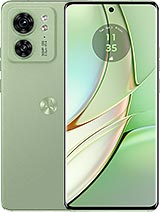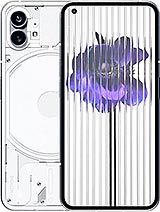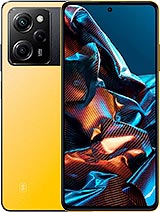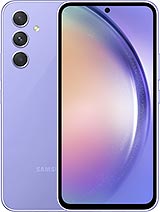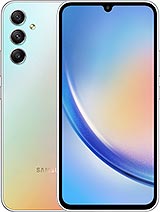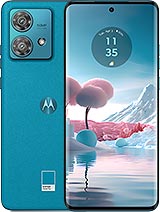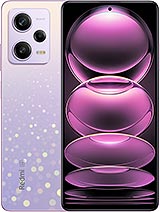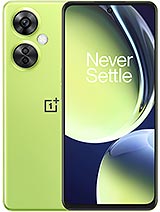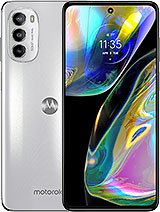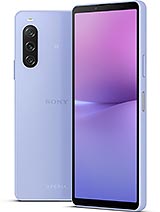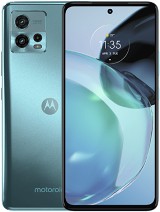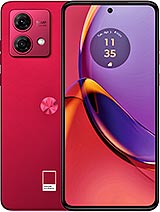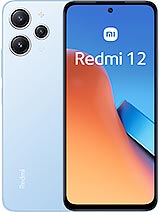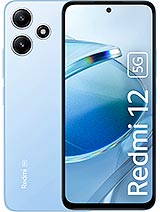Moto G84 review

Familiar AOSP with a Moto skin and features
The Moto G84 doesn't stray from Motorola's usual path when it comes to software. You're getting a nearly AOSP-looking version of Android (13, in this case), augmented by a handful of proprietary features.

We believe that the clean appearance is a selling factor generally applicable to all Moto devices, while the added functionality helps widen the appeal for even more users.
One thing that readily sets apart AOSP (or Pixel) versions of Android, and in turn, Motorola's, from essentially all manufacturers' overlays, is the Quick Settings and notification shade. That means big and bubbly buttons, of which you only get four on the first pull, up to 8 on the second, and a full-screen notification shade.

Widgets are another thing some makers like to take their own path, but Motorola sticks with Android's interface, introduced with v.12 and carried over for another OS version. The widget picker offers responsive previews for differently-sized widgets. The API supports dynamic coloring by tying into the Material You theming engine, allowing the widgets to adapt to the wallpaper.






Quick settings • Notification shade • Widgets
The Material You auto-theming feature is here, too, though it's masked behind a slightly customized Moto-specific theming interface. You can still get wallpaper-based accent colors, which will apply to Google apps and the settings menu.
As is usually the case, Motorola has added a handful of useful extras. They are all placed in a Moto settings app that lists them in categories. The Moto app itself has a new, fresh look this year.
The first category is personalization, where the OS-native auto-theming is housed on Moto phones. There is also a wide selection of Moto wallpapers in addition to Google's own, plus the option to leverage AI to create your own from the photos in your gallery.
Then come the gestures. By now, you must have seen Moto's karate chop motion that turns on and off the flashlight and the twisting motion that launches the camera app. Both work even when the device is locked.
The lift-to-unlock gesture works well with the face unlock, as it unlocks the device as soon as you pick it up and look at the screen. A swipe-to-split function is available, too - it triggers split-screen multitasking. You can also double-tap the back of the phone to do a custom action.
Browsing through the display section, we didn't actually find Motorola's Peek Display option, though it still seems to be present and working fine on the G84.
The screen lights up when it detects motion that's close to the phone or when you pick it up. Once you've received some kind of notification, you can tap on it, see the message, and even interact with it from the lock screen.
Attentive Display disables the screen timeout as long as there's a face looking at the screen.
Then there's the Play section. Here, you'll find the Gametime utility, which offers the usual functionality of tools like call and notification blocking and screen recording. Additionally, there are optional shortcuts for media playback when the screen is locked using the volume keys and a Dolby Atmos sound enhancement utility.
You can also force a refresh rate on a per-app basis from the game launcher, which you might have to do given the G84's relatively poor automatic behavior while gaming.
With recent versions, Google has been investing heavily in Android's privacy and security aspects. This includes things like the Privacy dashboard, which offers a unified view of what permission is being used by what app and when.
There are also the camera and microphone indicators in the top right corner of the screen for an immediate clue that you're being watched/listened to, but also the quick toggles to limit access to those altogether. There is also the option to determine whether an app gets your precise coordinates or an approximate location.
Secure folder is self-explanatory. It is a vault to keep your sensitive apps and files. A few interesting network protection options are on board, like blocking certain apps from accessing the network while you are connected to an unsecured Wi-Fi hotspot.
Other interesting security features include the ability to lock your network and security settings for as long as your screen is locked. Also, the ability to scramble your pin input interface for higher security. You can access all of these security and privacy settings through a separate Moto Secure app shortcut as well.
Motorola's 'Ready For' platform (now more often styled with capitalized words, though not with any significant consistency), introduced in 2021, was originally only available on high-end Moto phones but has now made its way to more budget offers like the G84 as well. It enables many use cases that put the phone in the center of a big-screen experience. Connecting a TV or a monitor allows you to get a Windows-desktop-like environment, play a game on your phone, display it on the external screen, or even have a video chat on a larger display.
As a quick reminder, the Moto G84 lacks any video output through its Type-C port, so you can't just connect it straight to a display with a cable. You either have to use Miracast wireless technology or the PC companion app.
If you don't have a mouse and/or keyboard handy, the phone's screen can be used as a trackpad and/or keyboard.
You can also use 'Ready For' on a Windows-based PC - it runs within a window on your desktop. This is helpful when running an Android app from your computer or multi-tasking between devices on just one screen. Unfortunately, the desktop resolution from the G83 seems to be limited to 1280 x 800px, which is not ideal.
Another use case of 'Ready for' on a Windows PC is for video calls, where you can use the phone's camera to capture yourself and an external display to see the other participants.
Performance and benchmarks
The Snapdragon 695 was announced back in 2021 and is definitely getting on in years. It was never a particularly powerful chip to begin with, but rather a decent and power-efficient mid-ranger with 5G capabilities. The Snapdragon 895 was a popular choice for mid-rangers for quite some time, but it is past its prime, and there are definitely better, newer, price-comparable chips on the market. Its noteworthy shortcoming is the limited DSP, which caps camera video capture to 1080p.

The Snapdragon 695 offers a modest octa-core CPU setup - 2 x 2.20 GHz Kryo 660 Gold & 6 x 1.70 GHz Kryo 660 Silver and a somewhat meager Adreno 619 GPU. Nothing chart-topping for sure.
The Moto G84 only comes in one memory configuration with 12GB of LPDDR4X RAM and 256GB of UFS 2.2 storage. Neither is a particularly cutting-edge interface and doesn't offer the best operating speeds. At least on a positive note, the storage is expandable via a microSD card.
Let's kick things off with some CPU runs and GeekBench. The Snapdragon 695 inside the Moto G84 offers roughly the expected level of performance. However, it is on the lower end of the Snapdragon 695 spectrum. Also, it is positioned near the bottom of the performance chart as compared to its peers.
As we said, the Snapdragon 695 is an aging and modest chip that offers about as much performance as the Helio G99. Anything more powerful than that, like the popular MediaTek Dimensity 1080, has it handily beat. And it is worth mentioning that you can easily get a Dimensity 8020 or 8050-equipped device in the same price range. Also, one rocking a Snapdragon 778G or 778G+, both of which are in a whole other performance league compared to the Snapdragon 695.
AnTuTu is a more compound benchmark incorporating GPU runs and memory tests. It is a bit more favorable towards the Moto G84.
In terms of overall performance, the G84 is pretty close to the Redmi 12, rocking a more modern Snapdragon 4 Gen 2 chipset and the Moto G72 with its Helio G99 chipset. Once again, any of the number of devices rocking a Snapdragon 778G or G+ chip has it handily beat. The same goes for the Dimensity 1080 devices. Also, the popular Samsung Galaxy A53 with its Exynos 1380 is notably more powerful than the G84.
The Moto G84 and its Snapdragon 695, or rather Areno 619 GPU, do make up some ground compared to the Helio G99 and Snapdragon 4 Gen 2 in graphics performance.
That being said, once again even the modest Dimensity 1080 offers much better graphical performance than the Snapdragon 695. Not to mention the Dimensity 8020 and 8050.
3Dmark paints a very similar overall picture.
One good aspect about the Snapdragon 695 is that it really doesn't generate that much heat and is fairly easy to cool. The Moto G84 handles heat quite well. It thermal-throttles, of course, like all passively-cooled smartphones eventually do, but it does so gradually, with no major stutters and drops in performance. That's what we like to see.
That being said, the Snapdragon 695 doesn't really have all that much performance to leave on the table at all. There is no point beating about the bush here. The Snapdragon 695 is an aging and badly performing chip, arguably holding the entire Moto G84 package back.
Reader comments
- Anonymous
- 17 Feb 2025
- CbI
This is the worst mobile I ever seen camera won't work properly, after usage of few months facing hanging issue and overheating, facing glitche while capturing pictures, there is no proper service center for this brand, please don't buy thi...
- Anonymous
- 01 Dec 2024
- 7kn
Happy with G84.Using since Oct 2023 and no problems of any kind till now.













































